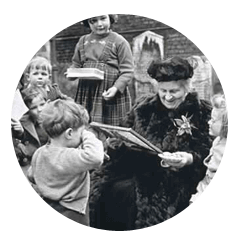The more perfect the approximation to truth, the more perfect is art.
Dr. Maria Montessori The Advanced Montessori Method

Zoology Education in Montessori
The Montessori Zoology curriculum begins with lessons of two basic divisions of zoology, they are Vertebrates and Invertebrates. And sub-divisions of vertebrates include amphibians, mammals, birds, fish, and reptiles. Then the lessons are progressed to the differences between vertebrates and invertebrates. The curriculum progresses to an introduction to the five classes of vertebrates and their skeletal structures. The external parts of the vertebrates are presented with nomenclature; more in depth research is supported by the Animal Kingdom Charts and "first knowledge" questions. With these materials as a stepping off point, children explore how and where animals live, what they eat, their life cycles and physical characteristics. The system of scientific classification is formally introduced, and children learn that both vertebrates and invertebrates can be classified using this system. The nomenclature for the major phyla of invertebrates is then presented, and students do independent research on these animals. The study of invertebrates parallels their introduction to the Time Line of Life in history, since our earliest fossil record of life on Earth is that of invertebrate forms.
The Animal Kingdom Charts and "first knowledge" questions also supplement the invertebrate work. The children then return to the vertebrates, looking at the internal parts of five classes. They expand their research projects to include scientific classification as well as information on the circulation, respiration, skin type, skeletal structure, reproduction, method of movement, nutritional needs and habitat of the animal they are researching upon. This study of the five classes of vertebrates also parallels Time Line of Life studies, as these classes are presented in the order in which fossil evidence shows that they appeared on Earth.
Exercising Zoology in Montessori
The beginning lessons are conducted verbally and then progressed to images gradually. First they are taught of the inclusions of real things, such as, if a child brings in an insect, the child will be asked place it in a “bug observer”, often called as a large magnifier technically, and have the children observe it. It is very important to never pass on your own personal fears or phobias, so teachers must always be aware of their own reactions to things.
In Language, classified cards are also a good way to teach different animals first orally, then with the labels. Children can then separate them into vertebrates and invertebrates, they can have them feel their own vertebrates and think of any pets and if they have vertebrates. As in everything around science, follow the child’s interests. Nomenclature cards are a good way of teaching the parts of an animal. If possible, begin the lesson by showing them a real frog. This not only aids them in their understanding of the frog but it also sparks their interest in learning.
